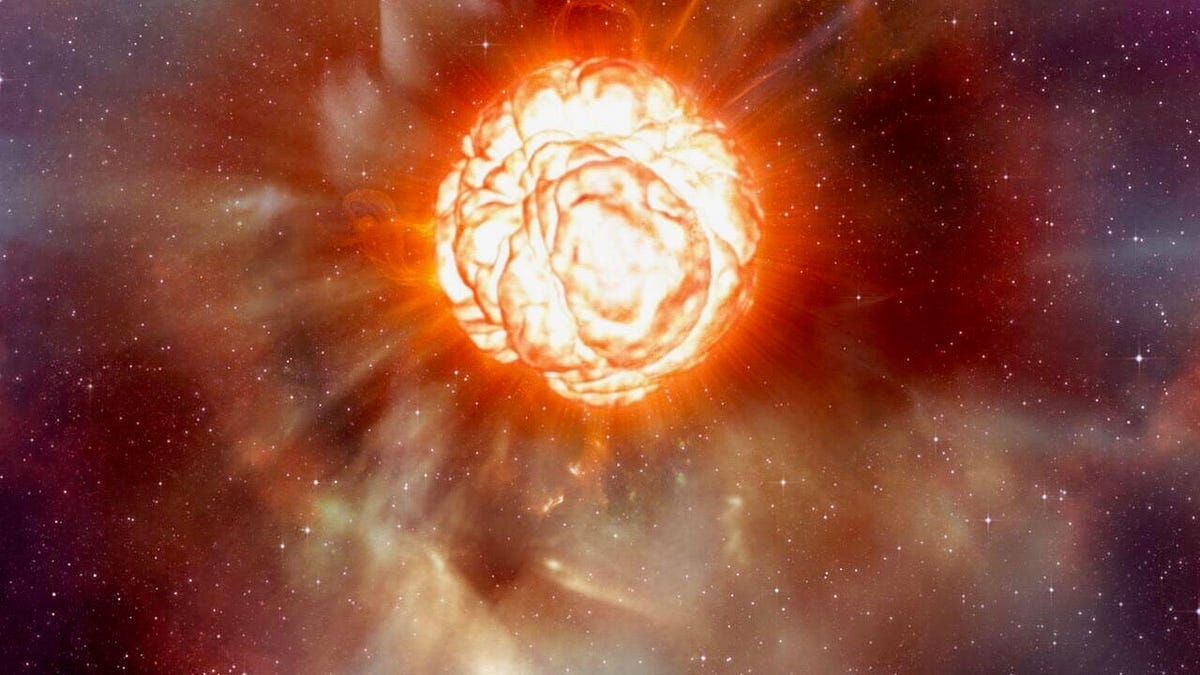NASA telescope uncovers the cause of Betelgeuse's mysterious dimming
And new observations suggest the red supergiant star is dimming again.

Betelgeuse will go supernova and explode... eventually.
In the Before Times, when the coronavirus pandemic was only just beginning its grim march across the globe, our troubles were much farther away. About 640 light-years farther away, in fact. Astronomers observing Betelgeuse, a red supergiant star, had been puzzled by its mysterious dimming. Some believed the event, which lasted from November 2019 to February 2020, was a portent of doom signaling the star's upcoming explosion. Then the dimming abruptly stopped.
Thanks to observations by NASA's Hubble telescope, we might know why.
A new study, published in The Astrophysical Journal on Thursday (and accessible at arXiv), examined ultraviolet light emitted by Betelgeuse during the "Great Dimming" event using the Hubble Space Telescope. Fortunately, the event occurred just as Hubble scientists were looking to observe Betelgeuse with the telescope, providing a chance to understand why the star had begun to go dark.
Betelgeuse is a massive star, about 700 times bigger than our sun. If you dropped it into our solar system, it would swallow Mercury, Venus, Earth, Mars, the asteroid belt's various worlds whole and Jupiter would end up as a snack, too. And it's coming to the end of its life cycle, sometime in the next 100,000 years. When the supergiant started to dim last year, there were some believers who thought the process of exploding may have begun.
A NASA graphic showing how a dust cloud might obscure the view of Betelgeuse.
The Hubble observations suggest differently. By looking at Betelgeuse at UV wavelengths, researchers were able to get a better look at the star's surface and atmosphere. They discovered a mass of bright, hot material moving outward from the southern hemisphere of the star at around 200,000 miles per hour and eventually being ejected into space.
"This material was two to four times more luminous than the star's normal brightness," said Andrea Dupree, associate director at the Harvard-Smithsonian Center for Astrophysics and lead author on the study, in a NASA release. About a month after the outburst, the south part of Betelgeuse dimmed conspicuously, she said.
Dupree and her team believe this material may have begun to cool down as it moved through space, forming a dense dust cloud that partially obscured Betelgeuse. It just so happens that Earth was in the perfect position to "see" the dust cloud front on, as if Betelgeuse shot the dust cloud directly at us. If it happened on the opposite side of Betelgeuse, we'd likely never even know.
Explosive outbursts are expected from star's at the end of their life and when they die or "go supernova," they release a shockwave that spews elements into space. The activity is critical to fill space with heavy elements like carbon, which then can become new stars elsewhere in the universe, so these stars are critical to the cosmic Circle of Life.
Betelgeuse is still acting a little weird, however. Observations by NASA's Stereo spacecraft observed the supergiant between late June and early August and noticed Betelgeuse was unexpectedly dimming again. NASA notes further observations will be undertaken in late August, when the star returns to the night sky and can be seen by telescopes again.

